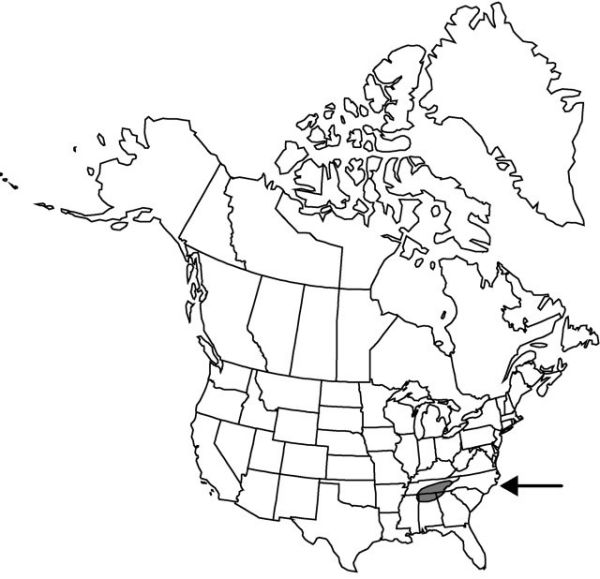familyLiliaceae
genusErythronium
speciesErythronium americanum
subspeciesErythronium americanum subsp. harperi
Difference between revisions of "Erythronium americanum subsp. harperi"
Brittonia 15: 252. 1963.
Common names: Harper’s trout-lily
Basionym: Erythronium harperi W. Wolf Castanea 6: 24. 1941
Treatment appears in FNA Volume 26. Treatment on page 161.
FNA>Volume Importer |
FNA>Volume Importer |
||
| Line 8: | Line 8: | ||
}} | }} | ||
|common_names=Harper’s trout-lily | |common_names=Harper’s trout-lily | ||
| − | |basionyms={{Treatment/ID/ | + | |basionyms={{Treatment/ID/Basionym |
|name=Erythronium harperi | |name=Erythronium harperi | ||
|authority=W. Wolf | |authority=W. Wolf | ||
| + | |publication_title=Castanea | ||
| + | |publication_place=6: 24. 1941 | ||
}} | }} | ||
|synonyms= | |synonyms= | ||
| Line 27: | Line 29: | ||
|elevation=0–300 m | |elevation=0–300 m | ||
|distribution=Ala.;Ga.;Miss.;Tenn. | |distribution=Ala.;Ga.;Miss.;Tenn. | ||
| − | |discussion=<p>C. R. Parks and J. W. Hardin (1963) indicated that <i></i>subsp.<i> harperi</i> may represent merely a southern race of <i>E. americanum</i>, but that the transition seems to be more abrupt than expected in a cline.</p> | + | |discussion=<p>C. R. Parks and J. W. Hardin (1963) indicated that <i></i></i>subsp.<i><i> harperi</i> may represent merely a southern race of <i>E. americanum</i>, but that the transition seems to be more abrupt than expected in a cline.</p> |
|tables= | |tables= | ||
|references= | |references= | ||
| Line 51: | Line 53: | ||
|publication year=1963 | |publication year=1963 | ||
|special status= | |special status= | ||
| − | |source xml=https://jpend@bitbucket.org/aafc-mbb/fna-data-curation.git/src/ | + | |source xml=https://jpend@bitbucket.org/aafc-mbb/fna-data-curation.git/src/f6b125a955440c0872999024f038d74684f65921/coarse_grained_fna_xml/V26/V26_270.xml |
|genus=Erythronium | |genus=Erythronium | ||
|species=Erythronium americanum | |species=Erythronium americanum | ||
Revision as of 19:31, 24 September 2019
Style ± terete or slightly swollen distally; stigma lobes recurved, distinctly grooved distally. Capsules: apex distinctly apiculate. 2n = 48.
Phenology: Flowering spring.
Habitat: Wooded slopes, ravines
Elevation: 0–300 m
Distribution

Ala., Ga., Miss., Tenn.
Discussion
C. R. Parks and J. W. Hardin (1963) indicated that subsp. harperi may represent merely a southern race of E. americanum, but that the transition seems to be more abrupt than expected in a cline.
Selected References
None.
Lower Taxa
None.